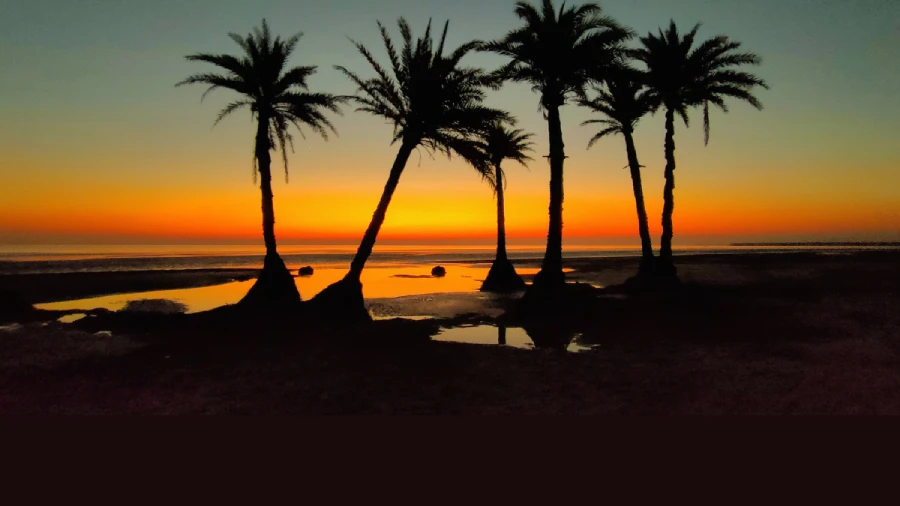Nijhum Dwip (Nijhum Island) is a magical piece of green nature in the bosom of the raging sea. It is a small green land surrounded by the Meghna River in the north and west, and beach and sea sand in the south and east. It has grown over time and has become a huge land today. And it is expected that these chars, which are gradually increasing, will have a good impact on the map of Bangladesh. Nijhum Dwip is a small island of Bangladesh located in Hatiya Upazila of Noakhali district. This char is located two kilometers southwest of Hatiya mainland. The entire Nijhum Dwip consists of four chars – Char Osman, Baullar Char, Kamalar Char, and Moulvir Char.
The island of about 14,050 acres was raised around 1940. It was also inhabited for about a decade. According to the calculation of 1996, Nijhum Dwip is located in an area of about 36,970 hectares of land. There are nine cluster villages in this Nijhum Dwip. In addition to cluster villages, there are small huts scattered in different places. Nijhum Dwip is surrounded by the Meghna River on one side and the Bay of Bengal on three sides. The current area of Nijhum Dwip is about 92 square kilometers. There is a Bandartila in the northern part of the island. There is a lot of water all around and a floating raft in the middle of the turbulent waves. Nijhum Dwip is a pride of Hatiya. Another new Bangladesh of potential can be developed with the rising new grasslands, including Nijhum Dwip.
Apart from having some beautiful moments, a trip to an island in the middle of the sea is healthy for both body and mind. The sound of the waves dashing on the island’s beach can soothe any restless mind. Moreover, the healthy noise of the island can bring out the childlike excitement from the people suffering from very old-age complications. The chars of the courtyard of riverine Bangladesh can fulfill this experience.

Naming of Nijhum Dwip
After the terrible cyclone of 1970, the popular leader of Hatiya Amirul Islam Kalam visited the island and saw no life there. So he said with a grave heart, Hey Nijhum! (Oh! Silence). It is learnt that the name of the island has been Nijhum Dwip since then.
A Blog of Tiny Wonders!
Sights of Nijhum Dwip
The specialty of Nijhum Dwip is the Chitra deer and winter guest birds. Although the population of this island is about 50,000, the number of Chitra deer is about 60,000. The density of Chitra deer per acre in Nijhum Dwip is three times more than that of Sundarbans. Four pairs of Chitra deer were released in the island surrounded by Kewra forest around 1978 to increase the biodiversity. Nowhere else in the country can you see so many Chitra deer together like Nijhum Dwip. It is the only island in Bangladesh, where there are more deer than people.

About 35 different species of birds can be found in Nijhum Dwip. In winter, you will see swans, gangchil, pelicans and so many birds. Thousands of guest birds arrive in the winter season. Among the local birds, you can see sea eagles, cranes, etc. If you want to see birds, you have to get up early in the morning. A local guide can help you. So you don’t have to worry about going to the right place on the island. Local boys are the guides. They take tourists to the mangrove forest to watch deer, birds.
As there are no carnivores like tigers on the island, the deer are breeding rapidly. Other mammals include the Asian small-clawed otter, fox etc. Different species of birds include goose, cranes. Reptiles include the sea turtles, monitor lizards. It is noted here that Nijhum Dwip is an important breeding ground for sea turtles. The forest trees of the island include Kewra, Gewa, Crab, Bain etc. In addition, there are about 21 species of trees and 43 species of vines on the island. And the call of the fox makes a wave of excitement when the evening falls. Unknowingly, music comes to mind. Bird calls, river waves, rows of kewra trees, sunset views and enchanting deer walks will enthrall you. At night, harmony of mind is lit up with light waves. There is no glitter of tourism, flash of colorful lights or loud sound of mechanical vehicles. Standing on Nijhum Dwip, it will seem that the island is really silent.
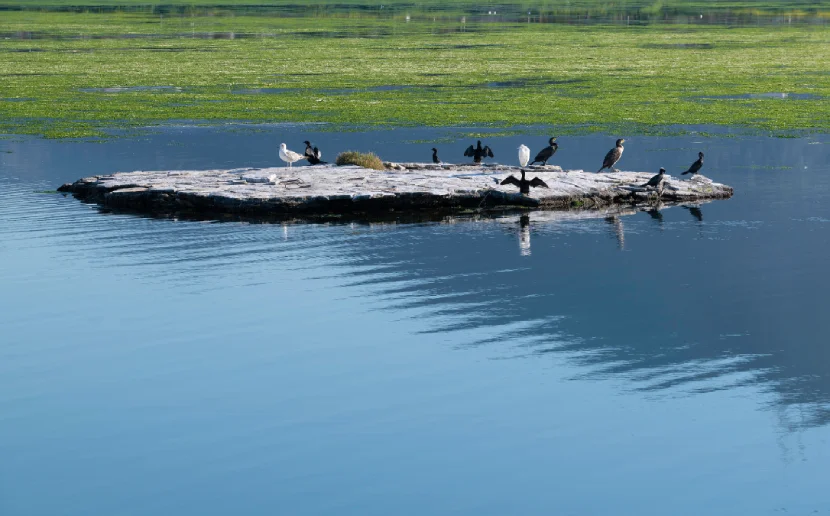
The sunsets of this island are so mesmerizing that for a moment you will feel that the world around you has stopped. In the evening, thousands of herds of buffaloes will catch your eyes as the sun sets. It is a completely different feeling to lose you in such closeness to nature.
There are very few places in the country that have such incredible beauty in the starry sky at night. It is more mysterious than any other place. It gives thrill to the travelers. However, for any travel enthusiast, this isolated, mysterious, beautiful island, Nijhum Dwip can be enjoyed simultaneously with the beauty of beaches like Cox’s Bazar and mangrove forests of Sundarbans.
Besides, one can stand on the beach and enjoy the view of sunrise and sunset. The island is covered with white sand on one side, and the beach on the other side.
Recently, another beautiful beach has arisen in the lap of the Bay of Bengal. The beach is absolutely pristine, virgin. It is now locally called ‘Virgin Sea Beach’. Apart from Nijhum Dwip, the bird fair is held at the neighboring islands of Kabiraj Char and Damar Char. If you go early in the morning, you will see many unknown birds here. This place is still unknown to many tourists. Chitra deer can be seen if you take a boat through the Chowdhury canal near Kabiraj’s Char in the late afternoon. If the trawler is reserved, the boatman can show the deer. A trawler for 10 to 15 people can cost Tk1000 to Tk1200.
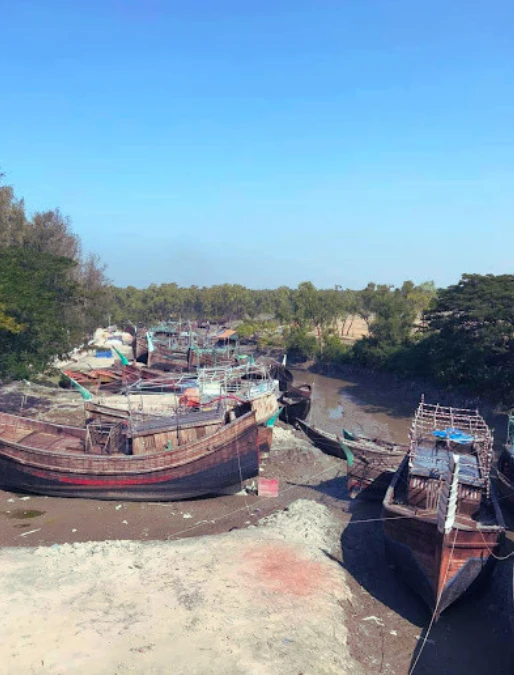
The narrow canal from the sea cut through the green chest and went to the deep forest. It is a love poem of green and salt water that cannot be believed. It is as if a green carpet has been spread to the bottom of the sea. Under the clear water, green grass and fishes play at will. Just seeing it will make you want to jump and fall down. Among the canals in Nijhum Dwip, Chowdhury canal, Patkakhali canal, Swankhali canal, Dubai canal, Dhamsakhali canal, Bhatrokhali canal and Kaunia canal are notable.
Nijhum Dwip has a large area of alluvial beds which is submerged in tidal water and dried in the ebb. It is famous for hilsa during monsoon season. Hilsa fish is available in Kamal canal. Apart from this, Nijhum Dwip is famous for chewing fish during winter or post-winter season. Fishermen catch this fish and make dried fish.
A Blog of Tiny Wonders!
Stay and eat

Obakash Parjatan has built Nijhum Resort to accommodate tourists in Nijhum Dwip. In addition to this, there are several rest houses. Nijhum Dwip also has various private high-quality residential hotels, mostly in the Namar Bazar area. Apart from this, there are Zilla Parishad Dak Bungalows and Forest Department Dak Bungalows.
The food service here is also very good. In Nijhum Dwip, you have to go to Namar Bazar to fill your stomach. The food hotels there are famous for their fried sea fish and prawns. A different flavor can be found in their cuisine. If you order in advance, you can get a relatively good quality of food. If you want to barbecue, you have to bring your own equipment. You will get barbecue equipment only at Nijhum Resort.
Best time to visit Nijhum Dwip
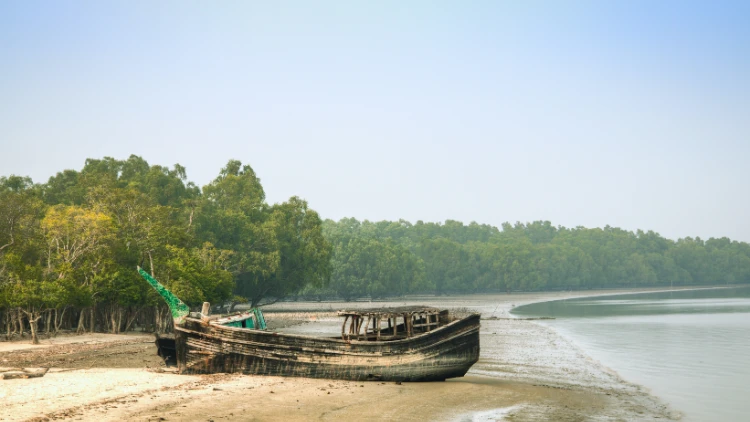
Winter and spring are the best time to explore the beauty of Nijhum Dwip. October to mid-April is the best time to travel to the island. As the roads are dry at this time, you can go anywhere in the vicinity. Besides, it will be convenient to walk on the forest path to watch the deer.
In the winter season, Nijhum Dwip means camping. The best place for camping on the island is the huge open field about six miles across the canal near the beach of Nijhum Resort in Namar Bazar area. Nijhum Dwip is completely self-sufficient in camping. Almost all camping items are available in nearby Jahazmara Bazar.
How to go Nijhum Dwip from Dhaka
There are three options to visit Nijhum Dwip from Dhaka, the capital city of Bangladesh. These are – highway, railway and waterways.
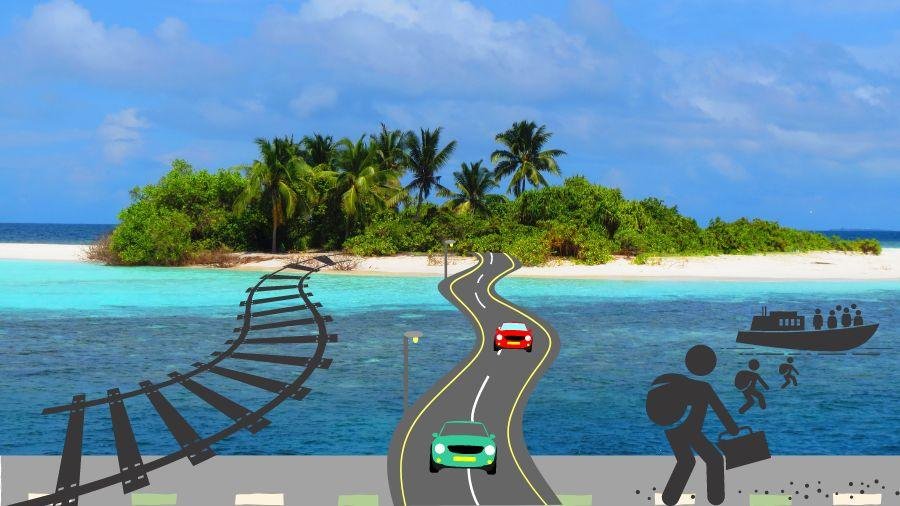
Being in the middle of the sea, the journey to Nijhum Dwip starts by road, but ends by water. In case of taking a bus, you can go from Sayeedabad Bus Terminal in Dhaka or Jigatala Bus Stand in Dhanmondi to Sonapur in Noakhali. You have to take a CNG-run auto-rickshaw to go to Chairman Ghat from Sonapur. There are trawlers, sea-trucks, and speedboats to go to Hatiya from Chairman Ghat. These boats will drop you at Nalchira Ghat of Hatiya. It should be noted here that the C-Truck departs from Chairman Ghat at 8 am every day. And the return truck from Nalchhira to Chairman Ghat leaves at 10 am. Motorcycle is the only way to cross Hatiya from Nalchhira Ghat by land. Then, you can reach Bandartila Ghat of Nijhum Dwip from Mokhtaria Ghat by trawler.
If you want to travel by train, you have to get up from Kamalapur Railway Station in Dhaka to Maizdi in Noakhali. It will take about six hours. Then you have to come to Chairman Ghat by CNG from Maizdi. The next road to Nijhum Dwip is the same narrated above.
The best way to reach Nijhum Dwip from Dhaka is by boat. Only one launch leaves from Sadarghat at 5.30 pm every day for Tamuruddi Ghat in Hatiya. It will be 9 am the next morning to reach the destination. The return launch from Tamuruddi Ghat to Dhaka leaves at 12:30 pm. You can reach Mokhtaria Ghat from Tamaruddi Ghat by motorcycle. The rest of the way should be passed in the same way.
However, there is another way to cross the waterway from Tamaruddi Ghat directly to Nijhum Dwip’s Namar Bazar. Some fishing trawlers go directly to Namar Bazar from Tamaruddi Ghat. To get on them, you have to be present at the ghat before 10 am. Besides, there is a way to go directly to Namar Bazar by reserving a trawler from here.
Last Words
It is necessary to be careful while traveling to Nijhum Dwip. Especially, a tourist must be aware of the weather there before starting the journey. Everyone depends on generators and solar power for electricity in Nijhum Dwip. So, while packing the bag at the moment of travel, you should not forget about moderate winter clothes and first aid as well as mobile charger, extra battery for camera and mobile, power bank and torch.
When hiring different vehicles you should fix the fare in advance. However, politeness should be maintained while bargaining. Above all, while traveling to Nijhum Dwip, you must ensure that the environment of the island is not polluted.
Last but not least, our life is very busy with daily routine work. You may come out from this monotonous life by paying a visit to Nijhum Dwip. It may be alone, or with group or friends or family members. Surely, the journey to Nijhum Dwip will make you happy and give you peace of mind.
